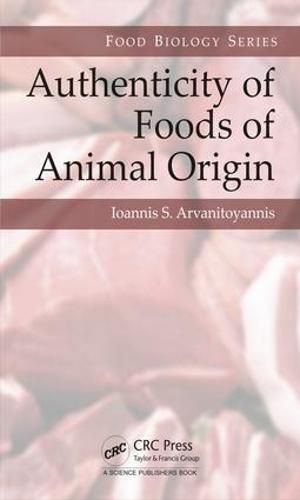Readings Newsletter
Become a Readings Member to make your shopping experience even easier.
Sign in or sign up for free!
You’re not far away from qualifying for FREE standard shipping within Australia
You’ve qualified for FREE standard shipping within Australia
The cart is loading…






Over the last 20-30 years the number of food poisoning incidents has increased considerably and this has had disastrous effects both on consumers and the food industry. Several food industries went bankrupt due to huge amounts of money paid to compensate consumers’ family/relatives. These unfortunate incidents triggered consumer and governmental awareness of food crises. In EU, for instance, an organization called EFSA (European Food Safety Authority) was established and its role is to deal with foods’ and feeds’ crises within the frame of RASFF (Rapid Alert System for Feeds and Foods). This system’s intent is to inform in a timely manner all the directly involved partners (food companies, laboratories, governmental officers) and also to monitor the measures/actions undertaken to minimize both the extent and the intensity of the caused defect.
The best policy to solve a crisis is to recall affected products. However, an effective and rapid recall presupposes the proper functioning of traceability. The latter is a prerequisite of current legislation (Regulation 178/2002). Traceability can be based either on EAN (European Article Number) -8,-9, -12, -13 and -128 or RF-ID (Radio Frequency Identification). Although the usage of RF-ID is more expensive than that of EAN, it is preferred in the case of animals and fish. Once the animal has been cut to pieces, all the previous information stored in the RF-ID can be passed to EAN-128.
This book aims at addressing five major issues: food traceability; food authenticity techniques and methods to detect potential adulteration; application of authenticity techniques and methods to foods of animal origin; legislation regarding traceability and authenticity in EU, USA, Canada, Japan, and Australia-NZ; and trends and suggestions for further research in food traceability and authenticity. A second book, entitled Authenticity of foods of plant origin and genetically modified organisms, will follow this book. This book is expected to be useful to academicians, industrialists, students of food science and technology, veterinarians, and technicians specialized in food technology.
$9.00 standard shipping within Australia
FREE standard shipping within Australia for orders over $100.00
Express & International shipping calculated at checkout
Over the last 20-30 years the number of food poisoning incidents has increased considerably and this has had disastrous effects both on consumers and the food industry. Several food industries went bankrupt due to huge amounts of money paid to compensate consumers’ family/relatives. These unfortunate incidents triggered consumer and governmental awareness of food crises. In EU, for instance, an organization called EFSA (European Food Safety Authority) was established and its role is to deal with foods’ and feeds’ crises within the frame of RASFF (Rapid Alert System for Feeds and Foods). This system’s intent is to inform in a timely manner all the directly involved partners (food companies, laboratories, governmental officers) and also to monitor the measures/actions undertaken to minimize both the extent and the intensity of the caused defect.
The best policy to solve a crisis is to recall affected products. However, an effective and rapid recall presupposes the proper functioning of traceability. The latter is a prerequisite of current legislation (Regulation 178/2002). Traceability can be based either on EAN (European Article Number) -8,-9, -12, -13 and -128 or RF-ID (Radio Frequency Identification). Although the usage of RF-ID is more expensive than that of EAN, it is preferred in the case of animals and fish. Once the animal has been cut to pieces, all the previous information stored in the RF-ID can be passed to EAN-128.
This book aims at addressing five major issues: food traceability; food authenticity techniques and methods to detect potential adulteration; application of authenticity techniques and methods to foods of animal origin; legislation regarding traceability and authenticity in EU, USA, Canada, Japan, and Australia-NZ; and trends and suggestions for further research in food traceability and authenticity. A second book, entitled Authenticity of foods of plant origin and genetically modified organisms, will follow this book. This book is expected to be useful to academicians, industrialists, students of food science and technology, veterinarians, and technicians specialized in food technology.